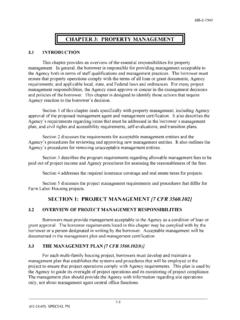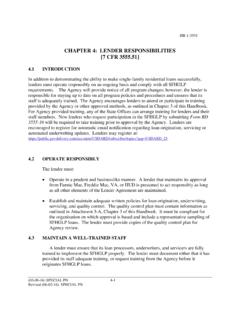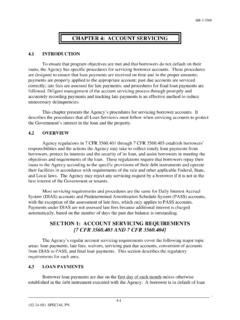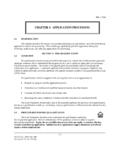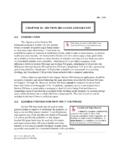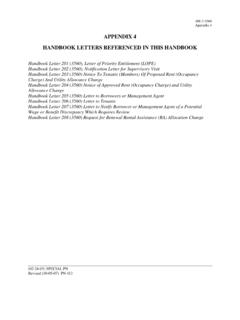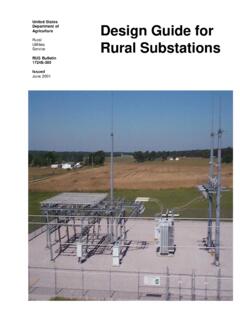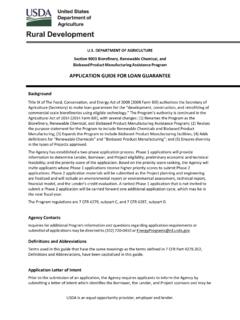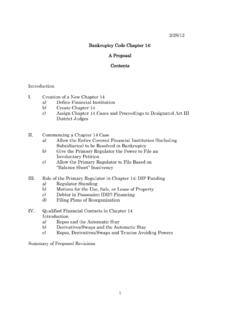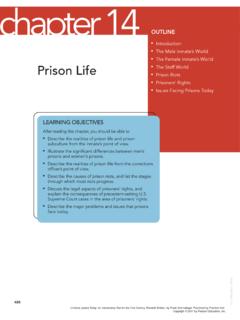Transcription of CHAPTER 14: MANAGEMENT AND DISPOSAL OF …
1 HB-3-3560 CHAPTER 14: MANAGEMENT AND DISPOSAL OF real ESTATE OWNED PROPERTY INTRODUCTION When the Agency takes ownership of a project, adding the property to its inventory through liquidation proceedings, the project becomes real estate owned (REO). When the title transfers to the Agency, the property becomes an Agency asset. The Agency s objectives in managing and selling its inventory of REO properties include: Preserving affordable, decent, safe, and sanitary housing for tenants or potential tenants; Maintaining the value of the housing project; Protecting the Agency s financial interests; Ensuring that the properties comply with state and local code requirements and applicable environmental regulations; and OVERVIEW OF THE CHAPTER This CHAPTER is divided into five sections.
2 Section 1 describes the MANAGEMENT of custodial and REO property. It describes acceptable MANAGEMENT methods; discusses issues related to taking possession of custodial and REO properties, such as disposing of nonsecurity property and paying taxes and insurance premiums; and explains requirements related to maintenance, environmental concerns, and other MANAGEMENT issues. Section 2 covers the disposition of REO property. It describes the methods for pricing and selling the properties and outlines procedures for accepting bids from potential purchasers. It also describes the standards the property must meet before being sold. Section 3 describes the environmental requirements that must be fulfilled before selling an REO property.
3 These include requirements related to flood and mudslide hazard areas, wetlands, coastal barrier resources systems, historic places, protective covenants and easements, underground storage tanks, and hazardous substances. Section 4 outlines the procedures for processing and closing the sale of an REO property. These procedures are similar to the procedures for closing other Agency loans. This section also highlights some of the special considerations for REO properties. Section 5 provides instructions on processing credit sales for non-program terms. 14-1 (02-24-05) SPECIAL PN HB-3-3560 This page intentionally left blank. 14-2 HB-3-3560 SECTION 1: MANAGEMENT OF CUSTODIAL AND REO PROPERTY OVERVIEW The Agency assumes MANAGEMENT responsibility for two types of properties: custodial and REO.
4 Custodial property is borrower-owned property that has been abandoned. REO is Agency-owned property to which the Agency has acquired title, either as a result of foreclosure or conveyance by deed in lieu of foreclosure. This section outlines the requirements for MANAGEMENT of each type of property. Loan Servicers are responsible for ensuring that custodial and REO properties are appropriately managed and maintained. The goal of property MANAGEMENT is to protect the tenants and the interests of the Government. Consequently, Agency efforts to secure and manage these properties are to begin immediately once the following occurs: The property title is conveyed to the Agency; or The Agency determines property is abandoned.
5 MANAGEMENT METHODS AND CONTRACTS The Agency has the authority to contract with qualified MANAGEMENT entities to perform the MANAGEMENT activities discussed in this section. The extent of MANAGEMENT is dependent on factors such as: The nature of the project; The project s location; The condition of the project; Necessary maintenance; and Availability of acceptable MANAGEMENT entities. In some cases, the existing MANAGEMENT agent can be maintained; in others, the Agency must hire a new MANAGEMENT agent to provide all property MANAGEMENT services on behalf of the Agency. A. Selecting a MANAGEMENT Contractor MANAGEMENT contractors are selected in accordance with Agency procurement procedures outlined in RD Instruction 2024-A.
6 Alternative methods for selecting a MANAGEMENT contractor may be established by the Agency if it is in the best interest of the Government. Alternative selection methods require advice from the Office of General Counsel (OGC). Prior to obtaining a MANAGEMENT agent for custodial property, the Agency should determine if court approval is required. 14-3 (02-24-05) SPECIAL PN HB-3-3560 B. MANAGEMENT Contract Requirements At a minimum, MANAGEMENT contracts must: Allow for properties to be added or removed from the contractor s assignment, whenever necessary, such as when a property is taken into custody, acquired, or sold during the period of a contract; Prohibit the contractor or associates of the contractor from performing repairs if the executed agreement calls for the contractor to provide detailed repair specifications; Require the MANAGEMENT agent to hold security deposits in trust and handle them in accordance with the tenant s lease or occupancy agreement; and Require compliance with environmental laws.
7 The MANAGEMENT agent must develop an Affirmative Fair Housing Marketing Plan (AFHMP), in accordance with RD Instruction 1901-E. The AFHMP must be submitted to the loan office. The AFHMP must receive written approval from the Civil Rights Coordinator in the Rural Development State Office. Form RD 1955-62, Request for Contract Services for Custodial/Inventory Property or Program Services is a sample statement of work for a project MANAGEMENT contract. C. MANAGEMENT Costs The costs of MANAGEMENT services related to REO property will be paid out of income generated by the housing project being managed. If income from the housing project is inadequate to pay for MANAGEMENT services, Agency resources may be used to pay for MANAGEMENT services.
8 D. Project Funds When a property becomes REO, the Agency transmits operating and maintenance, reserve accounts, and escrow funds to the St. Louis Office. The former borrower s account is credited for these amounts. If there is a surplus of funds, the St. Louis Office will forward a refund check payable to the former borrower. TAKING POSSESSION A. Taking Custodial Possession The Agency is authorized to take custody of security property when a borrower becomes incapacitated, dies, or has abandoned a security property. When the Field Office has attempted for more than 30 days and is unable to contact a borrower, the Loan Servicer must inspect the property to determine its status and attempt to locate and contact the borrower.
9 The Field Office should seek the advice of OGC in making its determination and recommendation. 14-4 HB-3-3560 1. Determining Whether a Property Has Been Abandoned The determination that a property has been abandoned requires significant investigation and documentation. In addition to the actions described in this paragraph, Field Office Staff must follow any procedures required by state or local law in order to confirm the determination of abandonment and to take custodial possession. The Agency cannot act to obtain possession of a property as long as a lien holder has legal possession of the property, or the borrower or the lien holder has a right to lease proceeds. Field Office Staff cannot classify a property as abandoned prior to documenting attempts to: Determine that there is no clear evidence of MANAGEMENT presence at the project.
10 For example, a site visit indicates that tenants are unable to contact borrower or property manager regarding repairs or rent collection, the project has fallen into disrepair due to a total lack of maintenance activities, or the Loan Servicer cannot locate the borrower or property manager; Locate the borrower through sources including, but not limited to, tenants, the postal service, utility companies, business associates, relatives, insurance agents, and tax authorities; and Determine whether there are other liens on the property. If liens exist, whether the lien holder(s) are willing to work with the Agency to secure the property. 2. Recommendation for Taking Custody The Field Office will report its findings to the State Director.
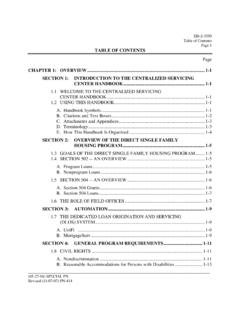
![CHAPTER 14: FUNDING [Official Agency Use Only]](/cache/preview/5/1/5/b/5/3/5/c/thumb-515b535cec62fd2bb25fbb788ef1c7a2.jpg)
